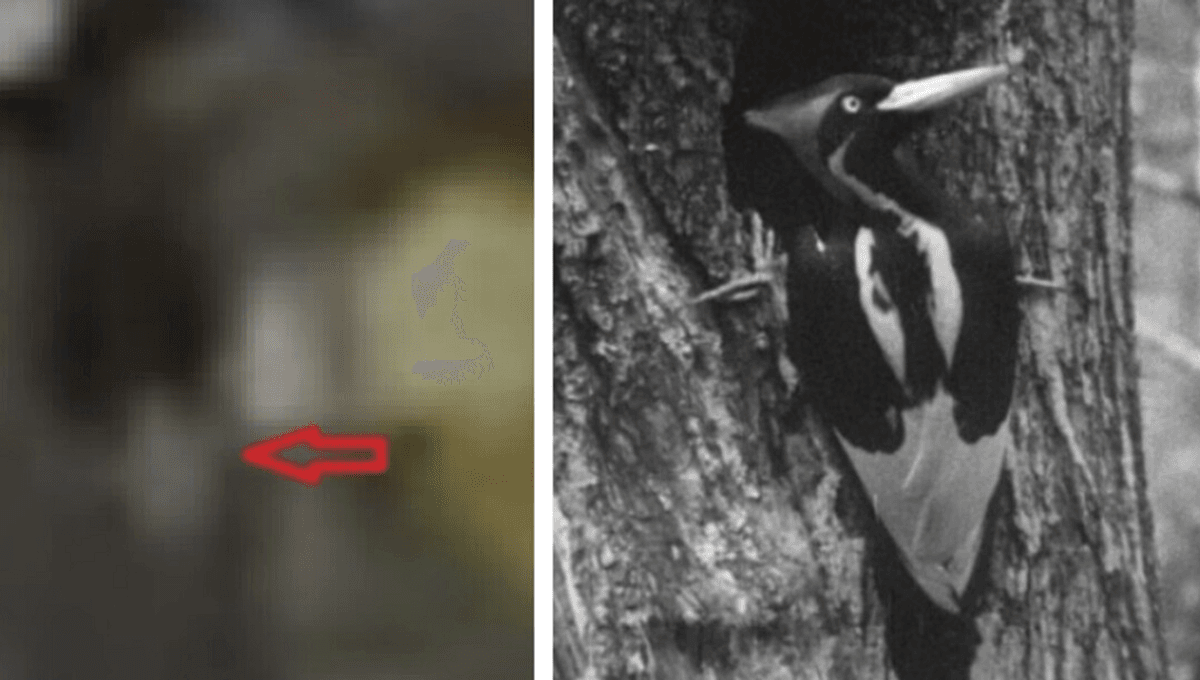
Footage that is claimed to show ivory-billed woodpeckers in Louisiana has been released, almost eighty years after the last accepted sighting in the United States. With even the Cuban branch of the family not seen for 36 years, the bird’s rediscovery would be a rare moment of joy for lovers of endangered species. However, not everyone is convinced the images actually show a member of the long-lost species, and some may see a last-gasp effort in the timing of the footage’s release.
With millions of species on the planet endangered by human activities, directly or indirectly, choices must be made about where we invest resources in the quest to save what we can. Being big, beautiful, or important to other species helps to win funding, but that’s all trumped by one thing: being dead. Once a species is declared extinct, efforts to save it stop – aside perhaps from a few rebellious fans, who seldom get far without financial backing. Consequently, being declared extinct can be a self-fulfilling prophecy for a species teetering close to the edge.
This is the context in which a decision is to be made this year on the status of Campephilus pricipalis, the ivory-billed woodpecker, and in which grainy images have been released that may (or may not) be the bird in question. A new paper makes the case the footage fits with other evidence that C. principalis survives, but decision-makers may not be convinced.
The paper draws on around 70,000 hours of recordings by units located in what was once territory for the birds, almost half a million camera-hours from similar locations and video from 3,265 drone flights. These contain many hints of the ivory-billed woodpecker’s survival, but nothing definitive. Experienced observers also made sixteen visual observations they believe to be of ivorybills. All these are reported in the paper, including seven the observers consider definitive.
“Our findings, and the inferences drawn from them, suggest that not all is lost for the Ivory-billed Woodpecker, and that it is clearly premature for the species to be declared extinct,” the authors write.
It’s easy to see why this particular bird would get plenty of funding and support if it’s still around. Besides having been the United States’ largest woodpecker, museum exhibits indicate it was very handsome, with an impressive red crest and a distinctive white “saddle” in flight. As a consumer of wood-boring beetles other woodpeckers can’t reach, it also probably prevented boom-bust cycles in its environment.
All this has inspired land purchases in the ivory-billed woodpecker’s former habitat. Nevertheless, with no confirmed sightings since 1944, the US Fish and Wildlife Service recommended in 2021 the bird be declared extinct. Public comment was held in 2022, and a decision is anticipated by the end of this year.
Reports of seeing the ivory-billed woodpecker or hearing its “kent” call persist, however. Not all of these are easy to dismiss, including a feather collected in the 1960s.
Videos taken from drones in February 2021 and October 2022 may be the strongest part of the paper’s case, but the drones were deliberately kept well above the tree tops, just below the FAA’s 122-meter (400-foot) height limit. This minimized the risk of disturbance to birds, but also makes it definitive identification harder.
“If the Ivory-billed Woodpecker continues to survive in Louisiana, this has conservation management implications not only in that state but also widely within the historic range of the species,” the authors write. Only by preserving and restoring large areas of interconnected forests can any surviving birds have a long-term future.
Even those who believe the ivorybills survive are not necessarily convinced about the evidence presented in the paper. Dr Michael Collins of the Naval Research Laboratory claims to have seen ivory-billed woodpeckers himself, yet told AFP the footage provided is of pileated woodpeckers that look like their larger cousins because of the way sunlight catches their wings.
It’s a story almost certainly more common than the ivory-billed woodpecker: Photographs or even film emerges of a species considered extinct; some hail proof of survival and others match to some other animal. Seldom, however, does quite so much rest on the outcome.
Even if authorities rule against them, however, the authors don’t plan to surrender. “The report contained here is not the end of our efforts,” they write. “We are encouraged and energized by what we have discovered and accomplished.”
The study is published open access in Ecology and Evolution.
Source Link: Purported Ivory-billed Woodpecker Footage Revealed Just Before Committee Rules On Its Extinction